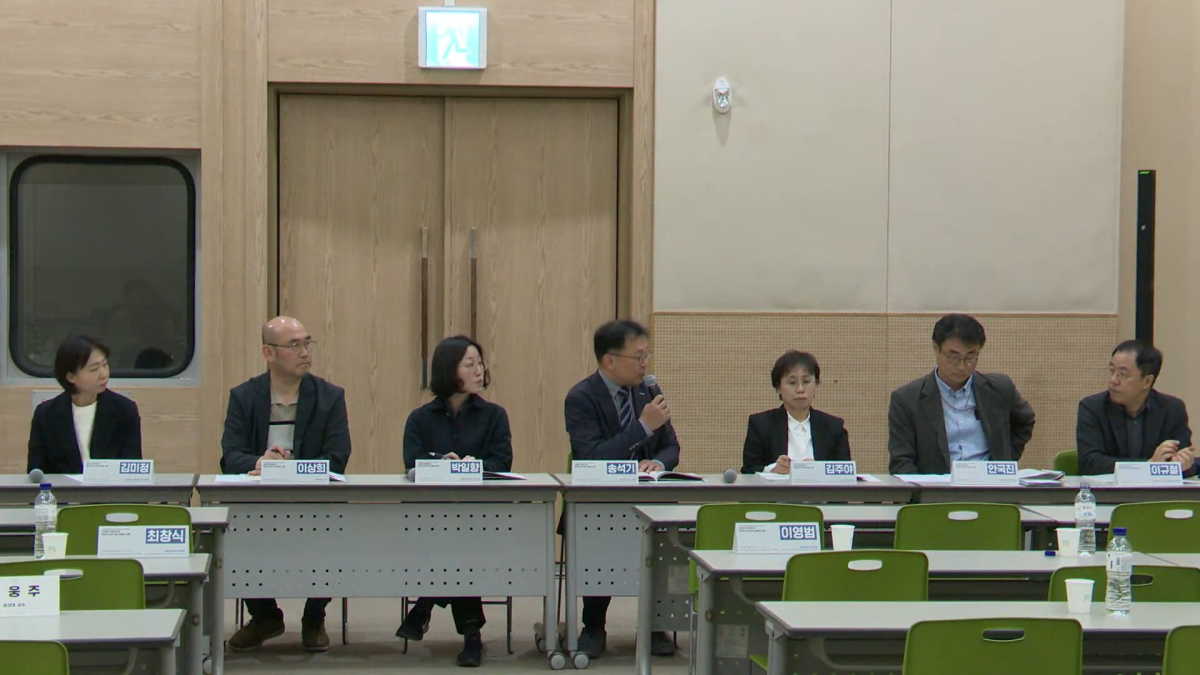SPACE June 2023 (No. 667)
The Architectural Asset Policy Seminar co-hosted by the Architectural Institute of Korea and Architecture & Urban Research Institute (auri) was held on Apr. 27, at BEXCO, Busan. The seminar, held under the theme of ‘Current Status and Tasks of Myeon-level Conservation Management of Modern and Contemporary Architectural Heritage’, was broadcast live on auri’s YouTube channel.
Architectural assets which are perceived as having ‘social, economic, and scenic values in both contemporary and future’, are designated as architectural asset value enhancement zones in accordance with the Act on Value Enhancement of Hanok and Other Architectural Assets. This doesn’t apply to individual buildings, but to areas where these architectural assets are concentrated. Accordingly, a system for the preservation management by ‘myeon-level’ has been established for the collective management of architectural assets. This seminar shares the opinions of related specialists on the current status of this legal system and seeks ways to activate the system. In charge of the first presentation, Park Ilhyang (associate research fellow, auri) presented on ‘the current status and revitalization plans of the architectural asset value enhancement zones’. Through examples of Hyangchon-dong in Daegu and Isa-dong of Daejeon, she pointed out situations in which the repair and revitalisation of architectural asset value enhancement zones are subject to delays due to budget deficits in local governments. She then stressed the importance of the promoting the support of the central government for such projects. Lee Sanghee (professor, Mokwon University) continued the seminar with his presentation on ‘the gap between the ideal and reality of the architectural legacy and urban regeneration of Soje-dong’. He noted that most of the buildings were damaged as the railroad residence in Soje-dong, Daejeon, was transformed into a private commercial facility in the name of an urban development project. Kim Mijung (researcher of Laboratory for Architectural Culture, Chosun University) presented on the theme of ‘Geomundo Island Modern Assets’, introducing the houses and public facilities of Geomundo Island constructed by the Japanese who moved to the island in 1906. Assets with the remaining structures of these buildings will be selected as Registered Cultural Heritage sites in Yeosu City. The second half of the seminar was a debate led by Song Seogki (professor, Kunsan National University). At the debate, Lee Geauchul (head of Architectural Culture and Asset Center, auri) stated that the projects related to the historical preservation of Soje-dong’s architectural assets had been carried out individually per building by private entities, and once again pointed out the need for myeon-level management. Following this comment, Ahn Kugjin (researcher, Suwon Research Institute) proposed ‘a plan for each local government to preserve and use assets through the purchase claim system based on the act on architectural assets’. The myeon-level conservation system for architectural assets has not yet exceeded 10 years since its commencement. Although it is difficult to expect meaningful results in such short period of time, however, it is necessary to continue with this related discourse through seminars in order to realise of effective systems and policies. (by Jung Youngju)



Screenshots from YouTube





